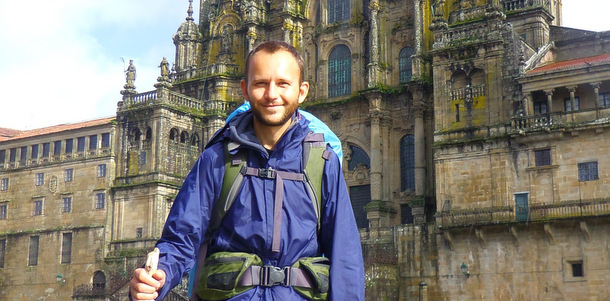S+L’s Kris Dmytrenko has been walking the Camino de Santiago in Spain. Read his
previous blog entries about the pilgrimage here.
After walking 800 kilometres, I finally reached Santiago de Compostela, the Spanish city at the end of my cross-country pilgrimage. But where was the Cathedral? My pace quickened as I marched towards the historic city centre, but still my ultimate destination remained obscured by the hilly terrain. The pavement was soon replaced by cobblestones and —
there it is! — the church’s four spires could finally be seen through a gap in the buildings above.
The sound of bagpipes welcomed me to the cathedral square. It’s a strange instrument to hear in Spain, even after one learns that this coastal region (called Galicia) has Celtic roots. I didn’t stop to listen, though, nor did I pause for more than a brief moment as two fellow pilgrims congratulated me. I only wanted to see St. James.
I climbed a tall staircase to the front doors and waded through thick crowds of pilgrims and tourists — a task made more difficult by my unwieldy backpack. To the left of the altar, I spotted a downward staircase marked by the sign: “Sepulcrum Sancti Iacobi Gloriosum”— meaning, the “tomb of the glorious Saint James”.
He is the reason this pilgrimage exists. The apostle James son of Zebedee (distinguishing him from the apostle James son of Alphaeus) was one of the first disciples. The Gospel of Mark describes how he, along with his brother John, encountered Jesus at the Sea of Galilee and immediately left his life as a fisherman. Following the resurrection, it is believed that James traveled to Galicia to preach. He returned to Jerusalem and was martyred, but tradition holds that his remains were brought back to his mission territory.
I felt a huge sense of relief as I proceeded to the crypt and knelt in front of the silver reliquary. My initial prayer was simply "St. James, St. James, St. James," over and over again. My heart swelled with gratitude for his intercession along the way, guiding me and the millions of others who trod this path before me.
